Child of the revolution, 1972
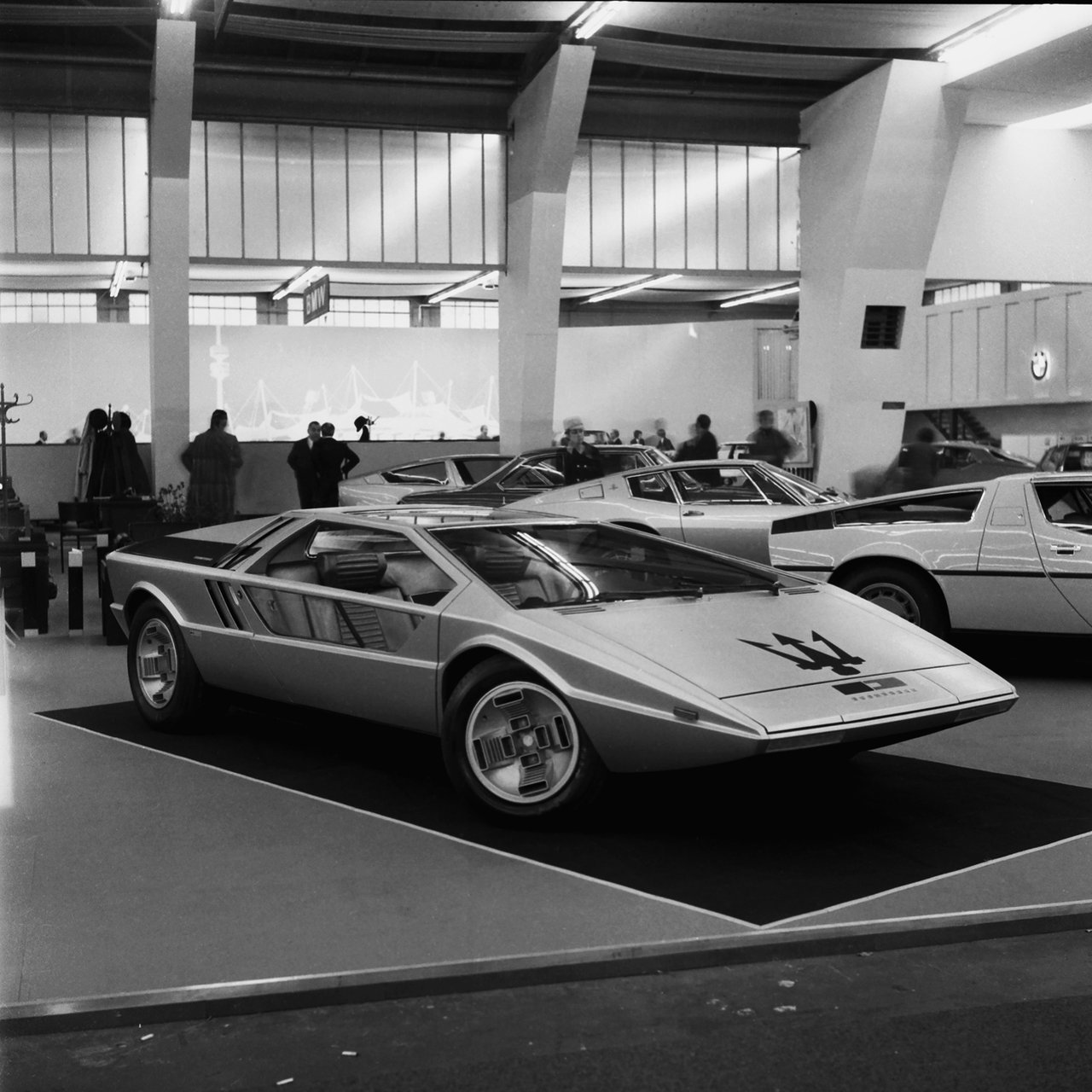
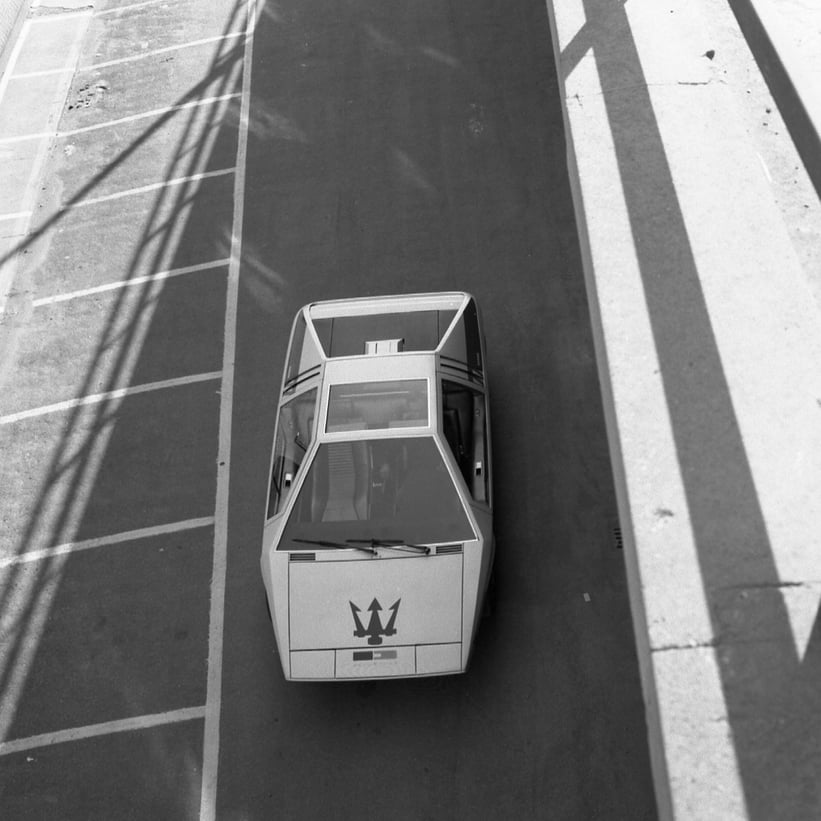
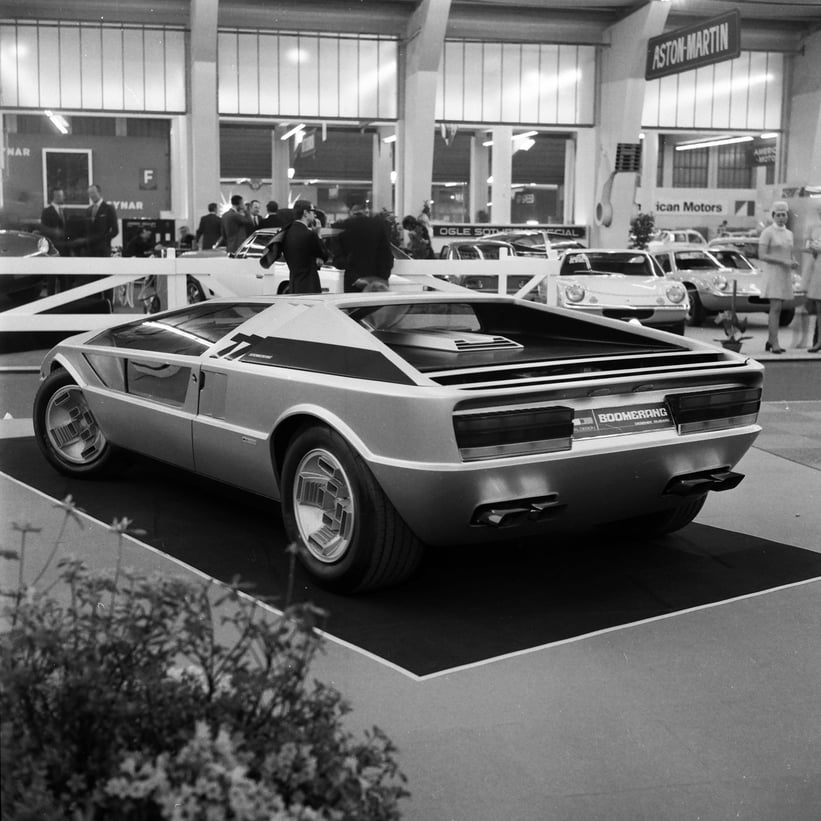
For admirers of bold 1970s concept cars, the above statement about the 1972 Maserati Boomerang might seem a little harsh – even disrespectful. But the Lord himself had spoken: its creator, Giorgetto Giugiaro, had envisioned a wheeled wedge straight from the future, whether he was retrospectively unimpressed or not. It was revealed in 1972 much to the astonishment of Turin Motor Show-goers, even though they might have been desensitised to the radical design by its appearance in epowood form a year earlier. Now, after passing through a number of (seemingly equally eccentric) owners since then, it will go up for auction on 5 September 2015 at Bonhams’ inaugural sale at the Chantilly Arts & Elegance.
Testing the limits of feasibility
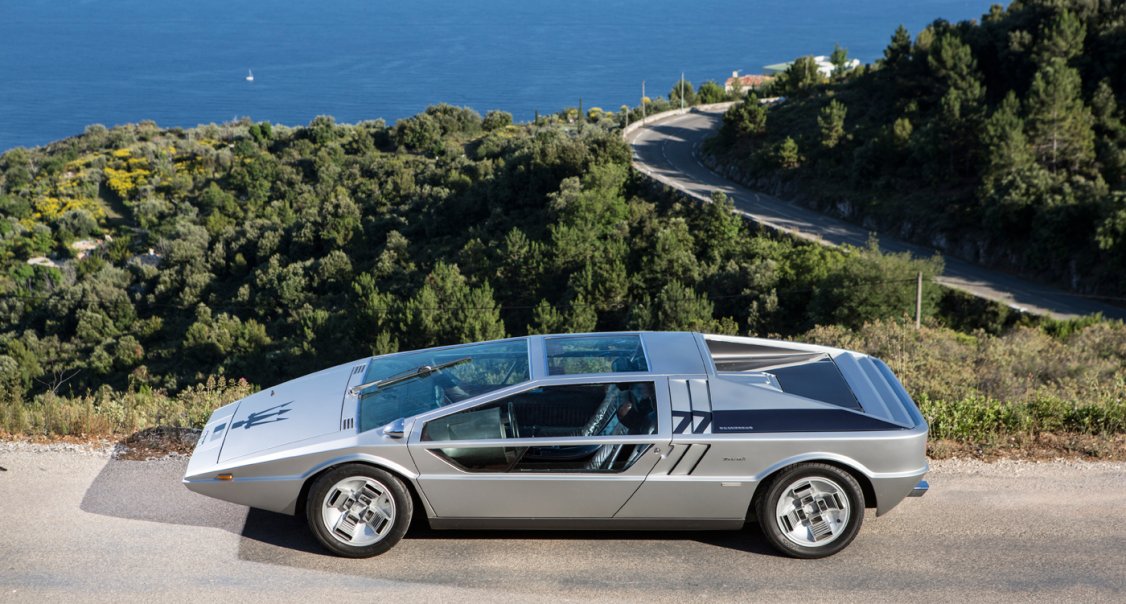

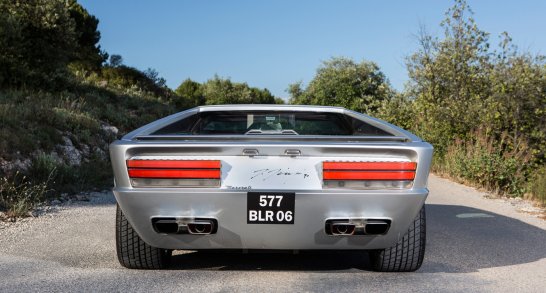
Giugiaro was in his mid-30s when he created the tapered design triumph. Before then, he had already created such classics as the Maserati Ghibli and De Tomaso Mangusta. The Boomerang was based on Bora underpinnings – a car whose angular silhouette already incorporated less-extreme Giugiaro trademarks – but the Italian’s intention this time around was to push the limits of feasibility as far as possible. He’d had some practice, too, penning the Alfa Romeo Caimano and Iguana studies, along with the VW-Porsche Tapiro.
Suited to everyday use
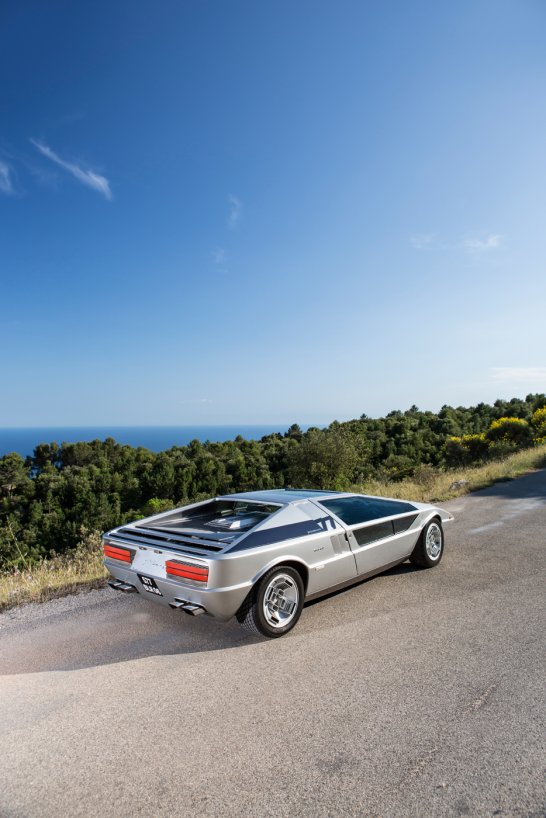
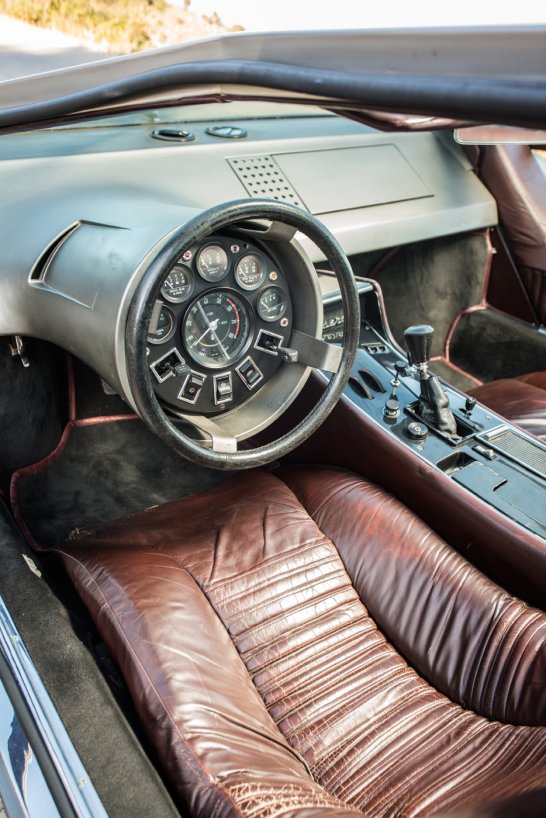
Borrowing its 4.7-litre, mid-mounted V8 from the Bora, the Boomerang boasts a generous glasshouse with angular side windows and a remarkably flat windscreen that tilts by only 13 degrees. Rather than scissor doors or gullwings, however, the Boomerang’s shallow doors are surprisingly conventional, being hinged on the side in the usual way. Giugiaro wanted the concept – unlike so many one-offs – to be genuinely roadworthy and capable of everyday use. This didn’t prevent the car from being spectacularly innovative, with such touches as the steering wheel that appears at the end of a large cylinder emerging from the dashboard. Contained in the front face of the cylinder are the main instruments and switches – a design that primarily aimed to protect the driver in the event of an accident. With more than 300HP and a top speed of almost 300km/h, modern drivers would not be disappointed by the performance of Giugiaro’s concept. One owner describes how, even after many years of ownership, he’d climb out of the Boomerang with a huge grin on his face – every time.
Inspiration for the VW Golf

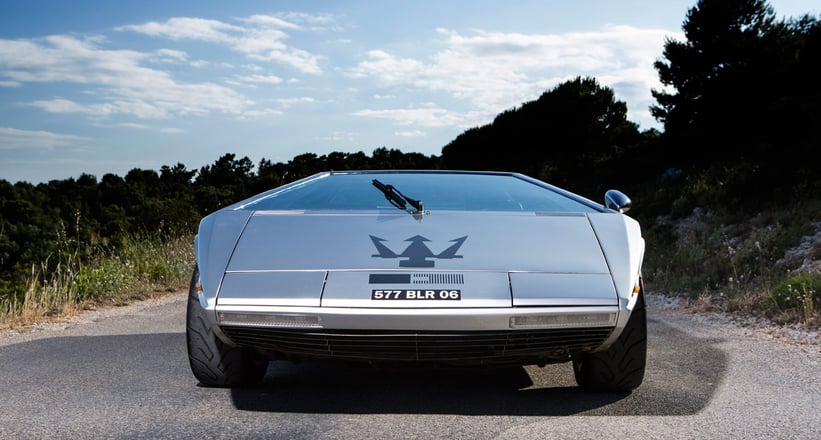

The space-shuttle geometry of the Maserati Boomerang sparked enthusiasm and inspired many other car designs – as you can see all too clearly in the lines of the Lamborghini Countach. Indeed, Giugiaro himself played with the potential of this form language, with both the Lotus Esprit and De Lorean DMC-12 being variations on the theme – two models that, thanks to Hollywood (‘For Your Eyes Only’ and ‘Back to the Future’), have achieved cult status. If, however, you look closely at the Boomerang, you can – with a little imagination – dimly perceive the shape of the successor to the Beetle, the first Volkswagen Golf. Part of Giugiaro’s genius is that he not only mastered the art of creating dream cars, but the small, practical cars for the masses (such as the Fiat Panda) that also flowed from his pen.
A wedge returns
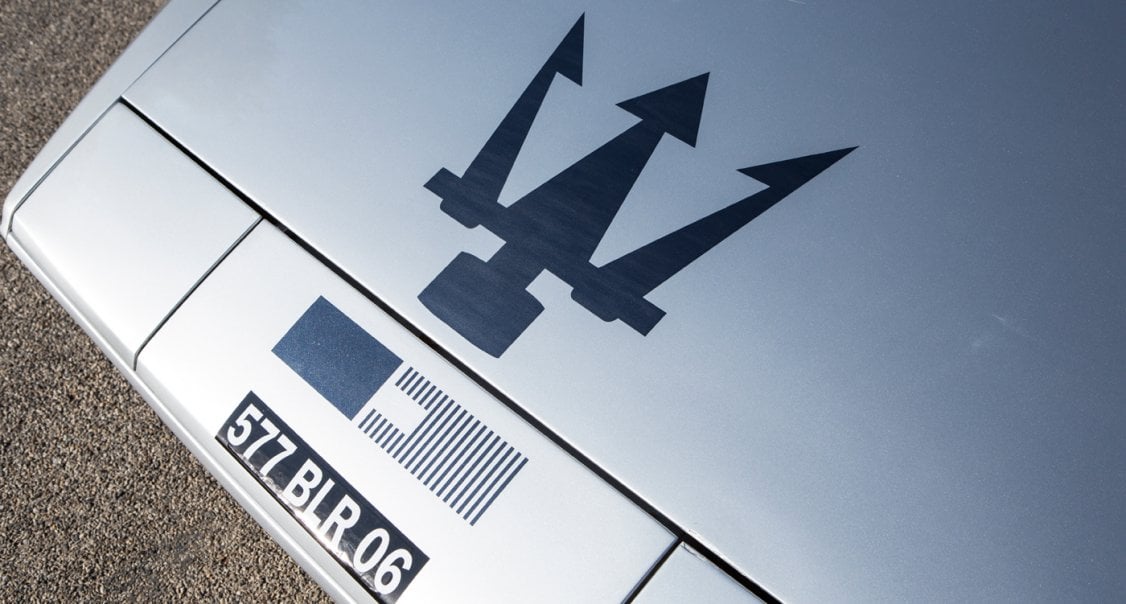

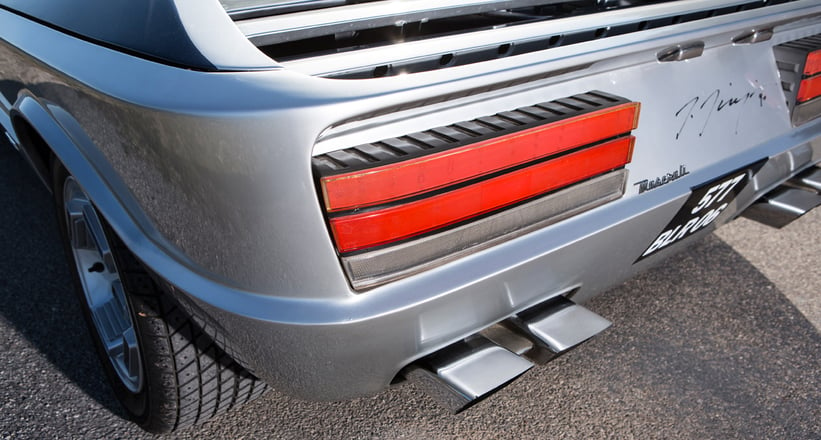
Photos: Bonhams



































